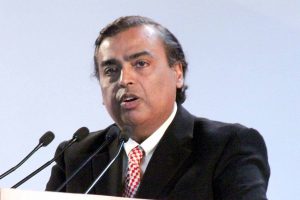Our economy, which the Union Budget certified as super-strong and capable of expanding to $5 trillion in the next five years, is now looking like a pale shadow of its earlier self. No significant economic event has taken place in the interregnum which would justify this drastic fall. The only development worth mentioning is the publication of statistics for the first quarter of 2019, which has triggered a near panic response from the Government and the public.
Learned economists, who were convinced that India was on the cusp of becoming an El Dorado, have now changed their tune. Government spokesmen are on the defensive, trying to show action on the ground and promising better days ahead. Central bankers are trying to obfuscate economic issues by using incomprehensible words like ‘floccinaucinihilipilification’ and ‘Panglossian’ with reference to the current economic crisis. Social media is having a gala time, putting out sarcastic memes. The present crisis has afforded Subramanian Swamy a rare opportunity for propagating his brand of economics. The Finance Minister is bravely soldiering on, trying to find a solution to the problems confronting the economy.
Advertisement
The Government’s problems started with the presentation of Union Budget 2019, which did not meet the enhanced public expectations, whetted as they were by the huge majority given to the ruling party. The Bombay Stock Exchange Share Index fell a record 800 points while the Budget speech was being read out. A partial roll-back of unpopular Budget provisions, announced by the FM within two months of the Budget, did not enthuse the public; gold and silver prices are on a roll while all other economic data looks shaky.
The inherent contradiction between the transformative roadmap drawn up by the PM and its unimaginative and lacklustre follow-up by ministers and bureaucrats is the main cause for public disenchantment. For example, a $5 trillion economy cannot be built up by projecting a fanciful rise of 28.24 per cent in revenue collection which would either not be achieved and/or lead to tax terrorism. In fact, a hunger to increase tax collection has led to a levy of 42.8 per cent income-tax on the super-rich ~ much above the Laffer Curve ~ which has resulted in disenchantment in the moneyed classes and an exodus of High Net-worth Individuals (HNIs) from our shores.
The bane of the Indian economy is the ersatz solutions adopted for deep structural problems. For example, the slowdown in the auto sector is in the headlines for the last six months, yet the best the Government could do was to offer incentives for electric vehicles which account for less than 1 per cent of all automobiles. To help the automotive sector, the Government is now planning to reduce GST on hybrid vehicles, which are not even one per cent of the vehicles on the road. A car which costs the customer Rs 15 lakh has an intrinsic price of close to Rs 8 lakh only ~ the rest being GST, Road Tax (for 15 years), Municipal Tax and Insurance (for 5 years). Add to it the pitiable condition of roads, the police overdrive in collecting enhanced fines ~ 6,800 people were booked and fined Rs 72.5 lakh in five days in Bangalore only ~ and you have enough disincentives for purchasing cars. However, the FM has held Uber and Ola responsible for falling car sales forgetting that a number of cars would have been purchased to be run as taxis and that till the other day, Ola and Uber were being complimented for helping in employment generation.
Recently, the Government has announced the merger of ten Public Sector Banks to get four large banks. Weak banks are being combined with stronger banks to tide over their NPA problems and thus come out of the PCA (Prompt Corrective Action) limitations imposed by the Reserve Bank of India. No homework has been done apart from studying the balance sheet of the affected banks. A fair possibility is that the toxicity of the almost bankrupt banks would soon pervade the stronger banks rather than the other way around. Economies of scale, which are implicit in mergers, can be enjoyed only by reducing redundancy, which has been expressly ruled out in the instant case. Bank mergers would most likely create unmanageable behemoths with idle manpower and a confused administrative set-up. A classic case of merger of public sector entities is the merger of Indian Airlines and Air India which has reduced the combined net worth of both companies to below zero in no time. A more recent example worth looking at is the merger of LIC with IDBI which has seen more than half of the capital infusion made by LIC vanishing in the last nine months.
A promise was made by the PM in 2017 to double the income of farmers in the next five years. To this end, Minimum Support Price (MSP) of a number of agricultural commodities was increased ~ in some cases by more than 50 per cent. The current budget prescribes Zero Budget Natural Farming (ZBNF), a method of chemical-free agriculture, to reduce the cost to farmers. Paradoxically, the FM did not allocate any funds to ZBNF. Rather, States have been allowed to use funds allocated them under Rashtriya Krishi Vikas Yojana-Remunerative Approaches for Agriculture and Allied sector Rejuvenation (RKVYRAFTAAR), and the Paramparagat Krishi Vikas Yojana, to promote ZBNF, Vedic farming, Natural farming, Cow farming and a host of other traditional methods.
Interestingly, allocation to these Schemes continues to be at last year’s level. The success of an important scheme without allotting sufficient dedicated funds can well be imagined.
Farmers across India are in distress because they never get remunerative prices for their produce. Anyone with even a nodding acquaintance with Indian agriculture would agree that rather than fixing a high MSP, measures to help farmers in marketing, choosing the correct crops to grow and improving village connectivity would work wonders. A bumper crop is a curse for farmers because only a part of the agricultural output is purchased by the Government and farmers are forced to sell a major part of their produce to traders much below MSP. It may also be mentioned that most of the Government procurement goes waste in the absence of proper storage facilities. On the other hand, when farm production falls and prices of agricultural commodities rise, the Government suppresses prices by imports. The most recent example is the proposed import of onions at a time when their prices have touched a decent level, after a long time. Agricultural distress can be addressed only by implementing a well thought out strategy like the Swaminathan Report on Agriculture of 2006 or have a policy like the Common Agricultural Policy of the European Union and not the piecemeal measures being adopted now.
Such examples are endless. In fact, there is some progress because it is for the first time that the Government has admitted that there is a problem with the economy. Having said that, it is equally true that symptomatic treatment of economic malaise will not succeed. The economy is not made up of discrete parts, rather all parts are inextricably joined together. Promotion of one part of the economy to the neglect of others will affect the entire economy adversely. For example, the neglect of agriculture while promoting manufacturing and services would lead to an employment crisis. In short, the Government needs to craft an overarching economic policy that will address the basic problems afflicting the economy and boost production, employment and investment across sectors.
Looking back, earlier Governments had a tradition of appointing outstanding economists to important positions in the Finance Ministry. It is time that the present Government revived this tradition and hired some really talented people, without bothering too much about their ideological inclinations.











